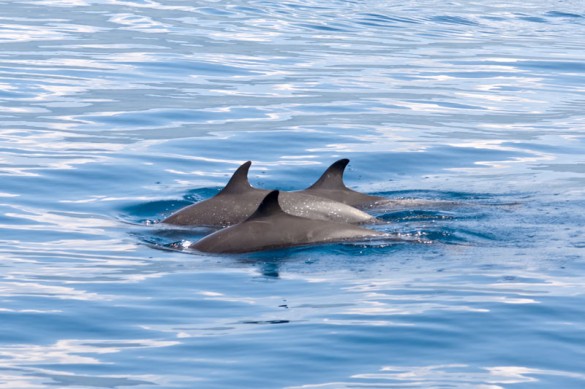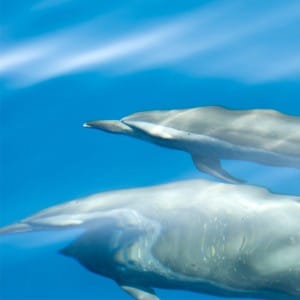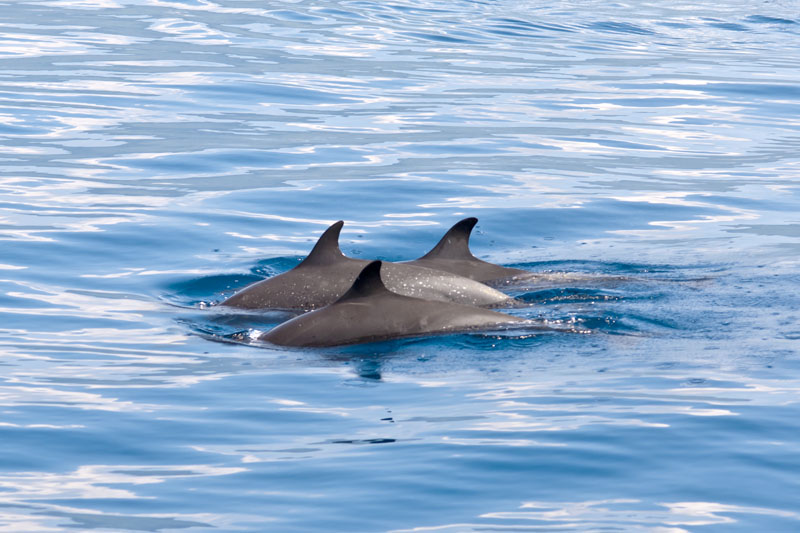
Wildlife tourism, in particular dolphin and whale watching, has doubled worldwide in the last decade. Since the 1980s, in Lovina (north Bali) local fishermen bring tourists to see dolphins in the wild. But with more than 180 boats today and a mismanagement of the interactions with the animals, there is a growing possibility that this activity will become unsustainable and a decrease in the number of animals are already being observed.
Lovina is a coastal area located in northern Bali belonging to the Buleleng Regency. Once a fishermen village, popular for those looking for a relaxed pace and a different lifestyle, it has recently suffered from unregulated touristic development that has modified the atmosphere towards a more ‘artificial’ feeling. Many people think that the development of the new international airport, a few kilometres away from the town, will further increase the transformation rate of the area towards a new Kuta of the North.
One of the main attractions of Lovina is the possibility of having a close encounter with free-swimming dolphins directly in their habitat and not in captivity, as these animals are particularly abundant in the coastal waters of this area. The most common encounter is the Spinner dolphin, but it’s also possible to spot other cetaceans like Grisso’s dolphin, Bottlenose dolphins and even more rare species like the Pilot whale and the Bryde’s whale.
Back in the late 1980s, local fishermen formed self-regulating cooperatives to bring tourists to see dolphins. Now, up to 180 dedicated operators use small ?shing vessels to carry passengers to watch dolphins close to shore. Most tourists come from western countries, although the industry also attracts Asian visitors. A dolphin tour normally starts very early in the morning during high season (from May to October) and lasts about two hours, for a price ranging from Rp.50,000 to Rp.65,000 per passenger. Typically boats are local jukung, bringing up to four passengers. The village of Kalibukbuk has three departure ports for dolphin trips, Banyualit, Aneka and Kalibukbuk, while Kaliasem has one, and every departure port has its own cooperative of boats, which releases the dolphin license. Each association has a different fixed price per trip. Two of the associations (Aneka and Kaliasem) use roster systems to determine which boatmen take the tourists on a particular day. The industry is otherwise unregulated.
A recent study by some Indonesian and Australian researchers (P. Mustika et al. The human dimensions of wildlife tourism in a developing country: Watching spinner dolphins at Lovina, Bali, Indonesia. Journal of Sustainable Tourism, 2013) that the degree of satisfaction of tourists (Westerners and Asians) ranged from low to medium, where the main concern was the mismanagement of the boatmen during their interaction with the animals that are easily stressed if the boat approaches them too fast or too close. In a standard day, about 40 vessels go out looking for the dolphins, and with more than 180 boats available, it appears clear how the industry is already saturated.
When a pod of dolphins is spotted, every boat driver tries to get as close as possible to them to anticipate the other boats and guarantee a better experience for his guests. Of course, the animals get stressed very easily since boat engines are very noisy and they have to modify their behaviour, remaining underwater longer to avoid contact with humans. Being mammals, dolphins need to go periodically to the surface to breathe and this kind of approach can be very stressful for them and for their very sensitive hearing ability (dolphins use sounds and ‘echolocation’ to detect their prey). Propellers also pose a huge danger to the animals that can easily be wounded if boats approach them too fast or get too close.
The same study also highlighted that the garbage present in the sea and on the beach is disappointing for the guests coming to Lovina. The garbage issue still doesn’t seem to be considered by many local boatmen that leave their beaches full of plastic, like in many other parts of Bali and unfortunately the whole of Indonesia.
Since a normal trip lasts less than two hours, it would be a good idea to clean the beach periodically, maybe involving tourists who are normally happy to contribute to such eco-activities. And, above all, these cooperatives should self-regulate their affiliates’ behaviour if they want to keep their activity sustainable and profitable even in the future.
In many areas of the world, the self-regulation of whale-watching operators is very effective in guaranteeing an appropriate interaction with the animals and to ensure they don’t run away from the area if too harassed. For example, a minimum distance from the animal should be imposed, as well as a maximum approaching speed and a maximum number of boats surrounding the dolphin pods. In the same study, it was reported that in many cases the number of boats in an encounter normally exceeds the number of dolphins.
An appropriate management is necessary for the sake of both the local boatmen that will be able to keep their job, of the animals that will remain safe, and for the tourists who will enjoy a more responsible management of this experience.
No national regulation on cetacean watching has been issued for Indonesia yet. In addition, as developing countries have limited capacity to deliver effective compliance, a self-regulation coming directly from the dolphin boats association is really needed, in the same way the diving centres of South Bali are trying to regulate the manta rays and mola mola encounter in Nusa Lembongan. If the situation remains the same, it has the potential to cause significant disturbance to the local cetacean population and, with at least 60% overnight visitors in Lovina joining the dolphin tours, a decline in tourist satisfaction that could harm the current tourist industry.
Travel Tips
Province: North Bali
How to get there: Lovina is located on the northern side of the island. You will need about 3 hours by car to get there. Expect to pay about Rp.500,000 for a one-way transit including car and driver. Since Dolphin trips start early in the morning, better to plan at least one night in Lovina.
Where to stay: Lovina offers many accommodations, from basic homestays to high-end resorts.
What to Bring: Sunglasses, sunscreen and a hat, seasickness pills, a camera with a good zoom and possibly a waterproof cover.




